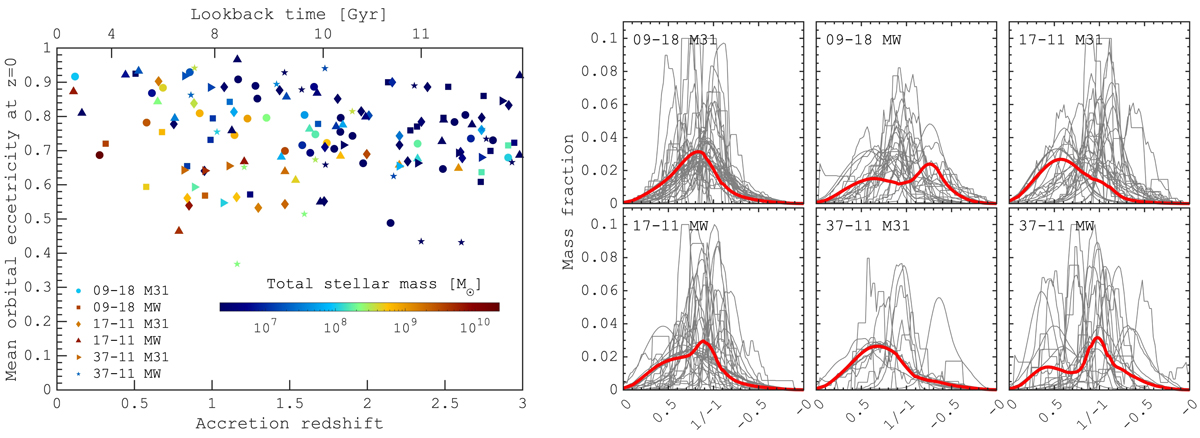Fig. 14.

Download original image
Orbital structure of accreted populations. Left: Mean eccentricity of merger remnants stars as a function of accretion time for all the mergers in the M31/MW HESTIA galaxies. The different symbols correspond to different simulations and galaxies and they are colour-coded by the stellar mass at the time of the merger. Right: Stellar-mass weighted distributions of the eccentricities for individual merger remnants (grey) and the mean distribution (red) at z = 0. Here, the eccentricity is multiplied by the sign of the angular momentum. Although the stars in the merger debris show a wide range of eccentricities, the mean eccentricity of the debris tends to decrease with time, whereas more recently accreted debris have slightly lower eccentricity. This evidently correlates with the stellar mass of the accreted system, which tends to be higher for the galaxies that accreted earlier, and thus evolved longer.
Current usage metrics show cumulative count of Article Views (full-text article views including HTML views, PDF and ePub downloads, according to the available data) and Abstracts Views on Vision4Press platform.
Data correspond to usage on the plateform after 2015. The current usage metrics is available 48-96 hours after online publication and is updated daily on week days.
Initial download of the metrics may take a while.


